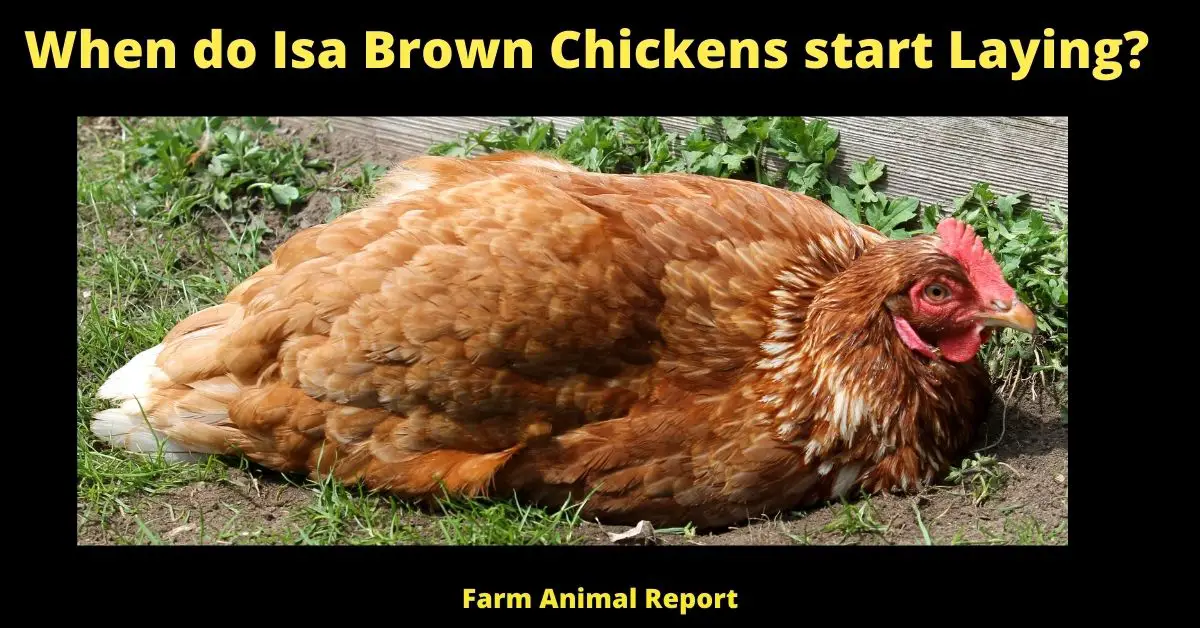The early laying habits of Isabelle’s make them one of the best egg layers in comparison to most other breeds. A good Isa Brown hen may start producing eggs as soon as 16 weeks, which is two months earlier than most races! Not only do these hybrid hens have an incredible ability for production but they’re also incredibly easy-going and calm even during peak breeding season
When do Isa Browns Chickens start Laying?
If you’re wondering when do Isa Brown Chickens start laying eggs, the answer is typically around 20 weeks. However, this can vary depending on the individual chicken and the time of year. In general, chickens will lay more eggs during the spring and summer months than they will during the fall and winter. If you’re looking to get the most out of your Isa Brown Chickens, it’s important to be aware of these patterns! When do Isa Browns Chickens start Laying?
History of Isabelle Brown Chicken Breed ( Isa Brown Breed )
The History of Isa Brown Chickens is a bit of a mystery. Some say that the breed was developed in Australia in the late 1970s, while others claim that the breed originated in America. Regardless of its origins, the Isa Brown Chicken has quickly become one of the most popular breeds of chicken around the world! When do Isa Brown Chickens start Laying?
Check Out Amazon for Educational Resources for Breeding Chickens
The Isabelle Brown Chickens got their name from the Australian company that first bred them, Isabrown Pty Ltd. These chickens were developed by crossing Rhode Island Red hens with New Hampshire roosters. The result was a chicken that was good for both egg production and meat! Jump to 12 Ways to Make Money by Chicken Farming **CHARTS**
Isa Brown Chickens are one of the most popular chicken breeds in the world due to their high egg production. In fact, these chickens can lay up to 300 eggs per year! That’s more than double the amount of eggs that most other chicken breeds can lay.
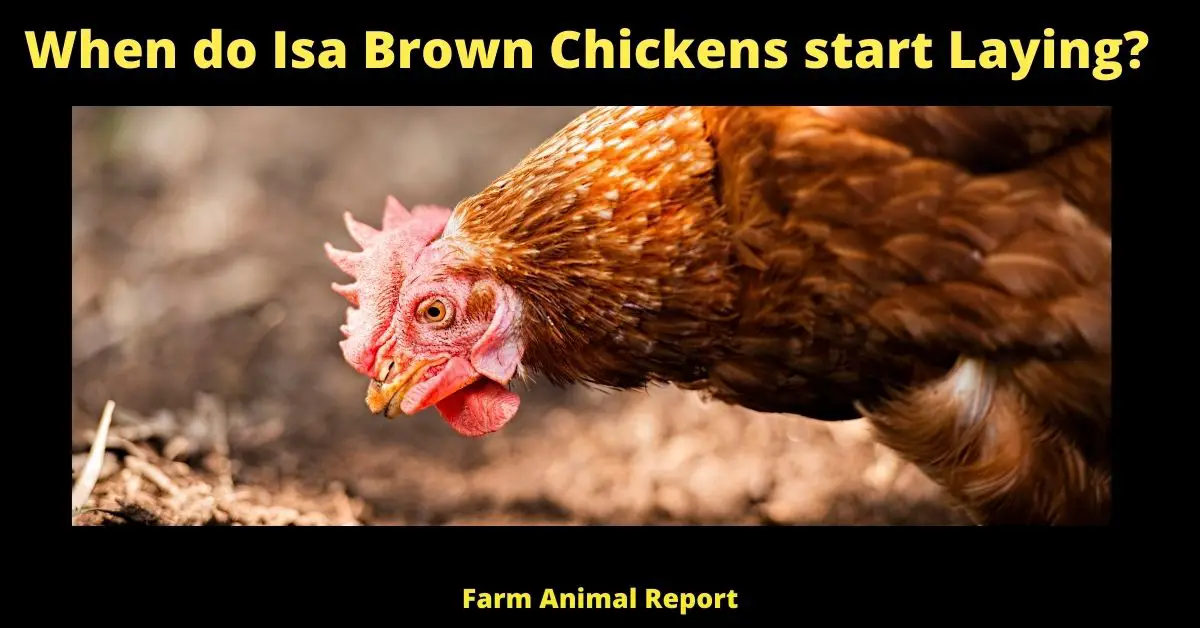
Isa Brown Chickens are also known for being very friendly and docile. They make great pets and are often considered to be one of the best chicken breeds for first-time chicken owners
What are Sex Linked Chickens Breeds? ( Isa Brown Personality )
Sex-Linked Chickens were designed to produce more eggs and to be better layers than other chicken breeds. These chickens are usually a cross between two different chicken breeds, with one being bred for egg production and the other being bred for meat.
The most common Sex Linked Chicken is the Isa Brown Chicken. This chicken was developed in Australia in the late 1970s and is a cross between a Rhode Island Red hen and a New Hampshire rooster.
Isa Brown Chickens are known for their high egg production, with some hens laying up to 300 eggs per year! They are also very friendly and docile, making them great pets for first-time chicken owners.
Other popular Sex Linked Chickens include the Golden Comet, Production Red, Cinnamon Queen, and Red Star. These chickens are all crosses between different chicken breeds and were developed for their egg-laying abilities.
If you’re looking for a chicken that will lay a lot of eggs, then a Sex-Linked Chicken is the way to go! These chickens are some of the best egg layers around and make great pets too. So what are you waiting for? Get yourself some Sex Linked Chickens today!
What is the Lifespan of Isa Brown Chickens?
The lifespan of an Isa Brown Chicken can vary depending on a number of factors but typically ranges from five to eight years. However, it’s not uncommon for these chickens to live well into their teens!
What Age do Isa Brown Chicken Hens Begin Laying? (Isa brown Eggs)
As we mentioned above, most hens will begin laying eggs around 16 – 20 weeks old. However, it’s not uncommon for some hens to start laying a bit earlier (or later) than this.
How Often do Isa Brown Chickens lay an egg?
Isa Brown Chickens are known for being prolific layers and typically lay an egg every day or two. However, this can vary depending on the individual chicken and the time of year. During the spring and summer months, chickens will typically lay more eggs than they will during the fall and winter.
How Many Eggs a Year do Isa Brown Chickens Bear?
On average, Isa Brown Chickens will lay between 200 and 250 eggs per year. However, some hens may lay closer to 300 eggs per year!
What Color are Isa Brown Chicken Eggs?
Isa Brown Chicken eggs are typically light brown in color. However, it’s not uncommon for these eggs to have a slight tint of green or blue.
Things that influence the eggshell color are the chicken’s diet, age, and the time of year. For example, young chickens typically lay eggs with lighter shells than older chickens. Additionally, chickens that are fed a diet rich in green vegetables will typically lay eggs with darker shells.
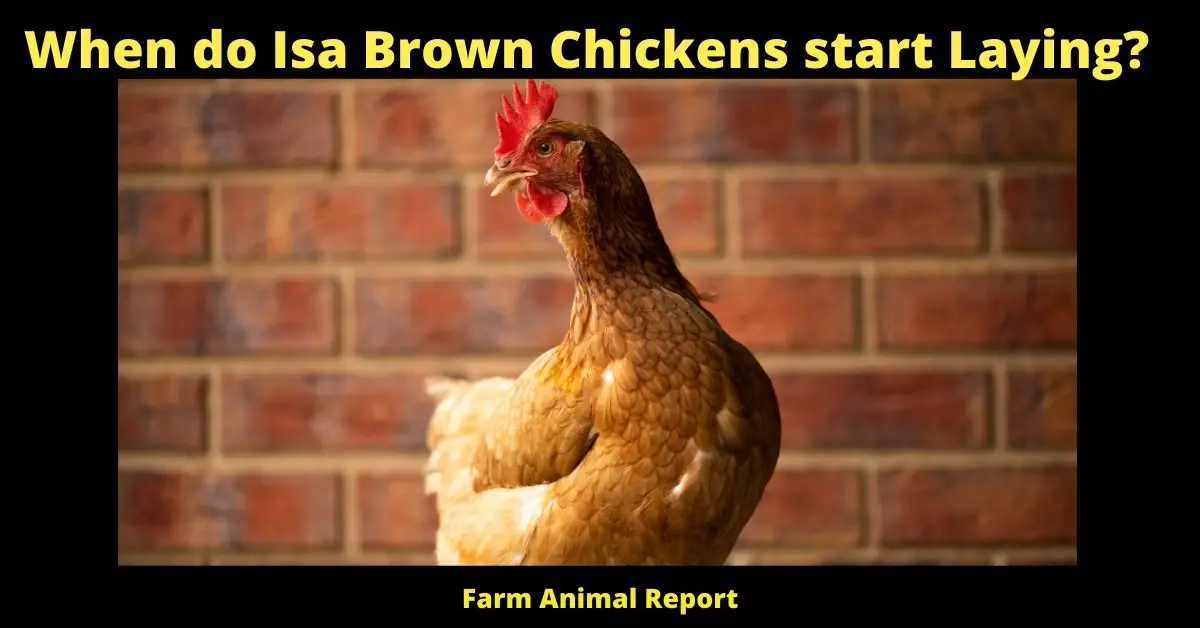
What is the Gestation Period of an Isa Brown Chicken?
The gestation period of an Isa Brown Chicken is 21 days. This means that it takes 21 days from the time the chicken lays the egg until the chick hatches.
What is the Fertility Rate of Isa Brown Chickens?
The fertility rate of Isa Brown Chickens is typically around 80%. This means that out of every 100 eggs that are laid, about 80 will be fertile and hatch into chicks.
The male/ female ratio is generally 50/50 for any chicken breed. So, for every 100 hens, you will need 50 roosters in order to ensure that the eggs are being fertilized.
How Long do Isa Brown Chickens Stay Fertile?
Isa Brown Chickens typically stay fertile for about two years. However, this can vary depending on the individual chicken. Some chickens may only be fertile for one year, while others may be fertile for three or four years.
After the age of two, the fertility rate of Isa Brown Chickens begins to decline. This is why it’s important to have a good ratio of roosters to hens in order to ensure that the eggs are being fertilized.
How to Feed Isa Brown Chickens?
Isa Brown Chickens are typically fed a diet of grains, pellets, and greens. However, it’s important to make sure that these chickens have access to fresh water at all times. Additionally, you may want to supplement your chicken’s diet with occasional treats like worms or insects.
Isa Brown Chicks – The first six weeks
As soon as your chicks arrive home, you’ll need to set up a brooder. A brooder is simply a box that will house your chicks and keep them warm. The brooder should be large enough for the chicks to move around freely, but not so large that they can’t find their way back to the heat source.
You’ll also need to provide a heat source for the chicks. A heat lamp is a common choice, but you can also use a ceramic heat emitter or an infrared bulb. The important thing is that the chicks have access to a consistent source of heat.
The brooder should be kept at a temperature of 95-100 degrees Fahrenheit for the first week. Then, you can begin to lower the temperature by five degrees each week until it reaches 70 degrees Fahrenheit.
You’ll also need to provide a water source for the chicks. A chick waterer is a good option, but you can also use a regular chicken waterer with a small cup attached. The important thing is that the chicks have access to fresh, clean water at all times.
Chicks also need a source of food. A chick starter feed is a good option, but you can also use a regular chicken feed. The important thing is that the chicks have access to a high-quality source of food.
As your chicks grow, you’ll need to provide them with more space. The brooder can be expanded by adding additional sections, or you can move the chicks to a larger enclosure.
Eventually, your chicks will be ready to move outdoors. When they’re about six weeks old, they can be moved to a coop or chicken tractor.
As your Isa Brown Chickens grow, they will begin to lay eggs. It’s important to provide them with a clean, safe place to lay their eggs. A nesting box is a good option, but you can also use a cardboard box or a basket.
The important thing is that the chickens have access to a comfortable place to lay their eggs.
It’s also important to collect the eggs regularly. Eggs that are left in the nest can break and attract predators.
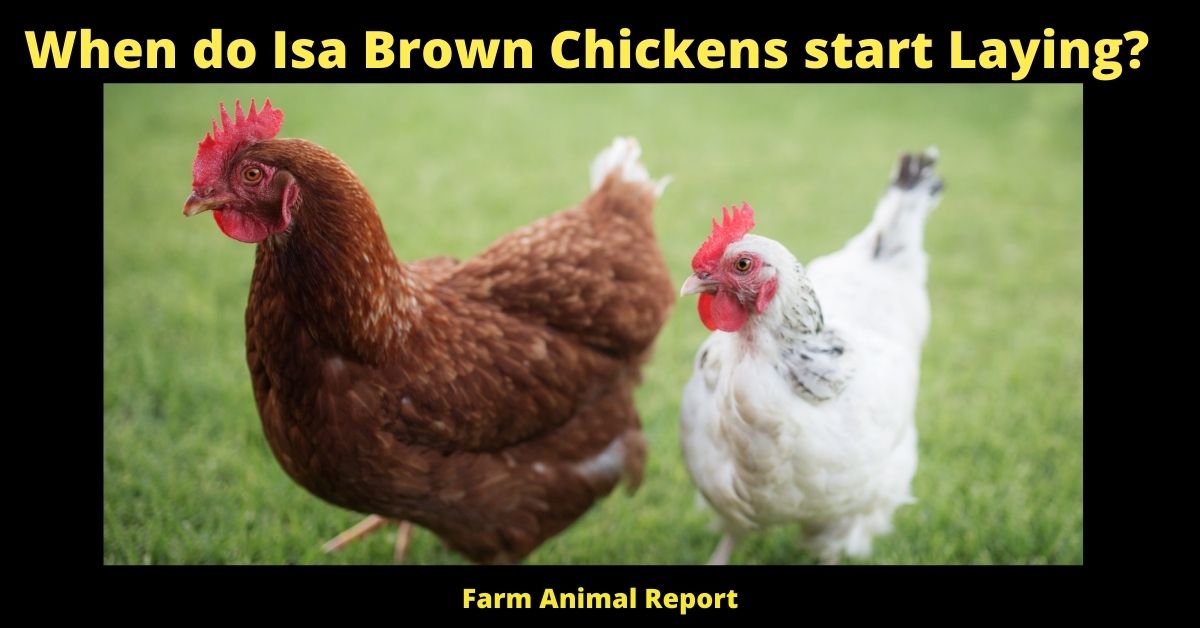
Isa Brown Layers – Sixteen weeks and beyond
Once your chickens reach sixteen weeks old, they will be ready to start laying eggs. Isa Brown Chickens typically lay one egg per day.
You’ll need to provide your chickens with high-quality chicken feed in order to ensure that their eggs are nutritious. Additionally, you should give them access to fresh water at all times.
As your chickens start laying eggs, you’ll need to collect them regularly. Eggs that are left in the nest can break and attract predators.
It’s also important to clean the nesting boxes regularly. Dirty nesting boxes can lead to bacterial contamination of the eggs.
Once your Isa Brown Chickens reach adulthood, they will be able to mate and produce offspring of their own. If you want to keep the chickens for egg production, it’s important to have a good ratio of hens to roosters.
Too many roosters can lead to fighting, which can injure or even kill the chickens.
It’s also important to keep an eye on the health of your chickens. Chickens can be susceptible to a variety of diseases and parasites.
If you notice any changes in the appearance or behavior of your chickens, it’s important to consult a veterinarian as soon as possible.
Isa Brown Broilers – Eight weeks and beyond
Isa Brown Chickens can also be raised for meat production. These chickens are typically slaughtered at eight weeks old.
You’ll need to provide your broiler chickens with high-quality chicken feed in order to ensure that their meat is nutritious. Additionally, you should give them access to fresh water at all times.
Isa Brown Roosters – Eight weeks and beyond
If you are raising Isa Brown Chickens for meat production, the roosters will need to be separated from the hens. Roosters can be aggressive, and they can injure or even kill the hens.
The roosters will also need to be fed a high-quality chicken feed in order to ensure that their meat is nutritious. Additionally, you should give them access to fresh water at all times.
When the roosters are eight weeks old, they will be ready for slaughter. It’s important to humanely slaughter chickens in order to avoid causing unnecessary suffering.
After the chickens have been slaughtered, their meat can be used for a variety of purposes. Chicken meat can be cooked and eaten, or it can be used to make chicken stock.
What are Common Egg Laying Problems?
Some of the problems that are associated with egg production problems Are;
- Floor laying – where the chicken lays her eggs on the floor instead of in the nest box. This is usually due to a lack of nesting material, or because the nest box is too small.
- Bloody shells – this can be caused by a lack of calcium in the diet, or by stress.
- Glassy shells – this is caused by a lack of protein in the diet.
- Wrinkled eggs – this is caused by a lack of water in the diet, or by stress.
- Thin shells – this can be caused by a lack of calcium in the diet, or by stress.
- Softshells – this is caused by a lack of calcium in the diet, or by humidity levels that are too high.
- Broken shells – this can be caused by a lack of calcium in the diet, or by stress.
- Too few eggs – this is usually due to a lack of food, or to stress.
These problems can be caused by many different things such as;
- Stress – from too much handling, from loud noises, from bright lights, or from being in a crowded place.
- Diet – not getting enough of the right nutrients, or getting too much of certain nutrients.
- Environment – if it’s too hot or too cold, if there’s not enough space, if there are too many other chickens around, or if there’s not enough light. .
- Disease – certain diseases can affect a chicken’s ability to lay eggs.
- The best way to deal with egg-laying problems is to try to figure out what is causing the problem, and then take action to fix it. For example, if you think the problem might be due to stress, try moving the chicken to a quieter place, or providing more hiding
- Age – as chickens get older, they lay fewer eggs.
- Injury – an injury can cause a chicken to stop laying eggs.
- Surgery – if a chicken has had surgery, it may take some time for her to start laying eggs again.
- Reproduction – when a chicken is reproducing, she will stop laying eggs.
- Broodiness – when a chicken is broody, she will stop laying eggs.
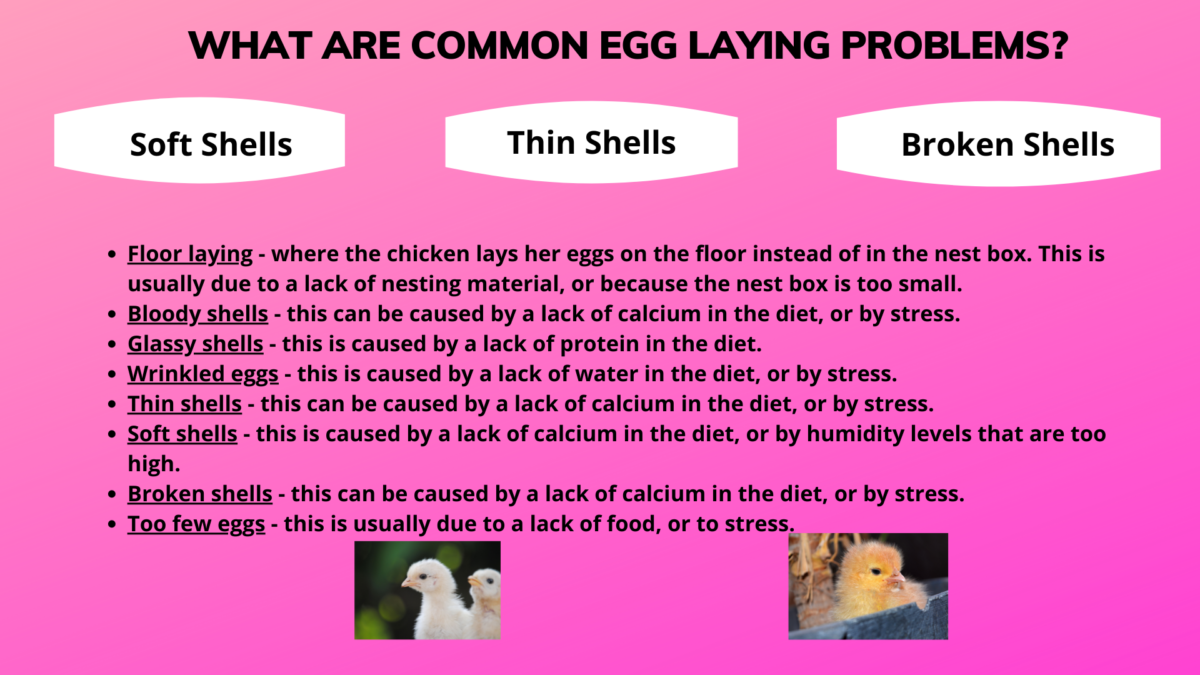
Final Thoughts – When do Isa Brown Chickens start Laying?
Inconclusion Is Isabelle Brown Chickens are prolific layers and are early layers starting as early as 16 weeks of age. They can also be used for meat production with many ready for slaughter at just eight weeks old. Isa Brown Chickens are one of the most popular breeds of chickens for both egg and meat production. They are hardy birds that are relatively easy to care for, and they have a good feed conversion ratio. If you’re thinking about raising Isa Brown Chickens, be sure you have picked an Excellent Breed.


